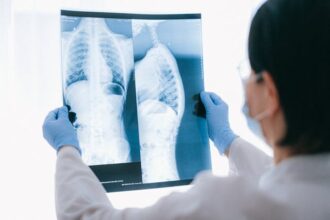A fundamental reality of the ageing process is the gradual decrease in movement speed, whether it involves something as routine as walking around the neighbourhood or as simple as reaching for the television remote. A recent study spearheaded by engineers from the University of Colorado Boulder sheds light on this phenomenon and offers valuable insights into the mechanisms underlying the tendency for older individuals to move at a slower pace.
This study is one of the pioneering efforts to disentangle the various factors contributing to the reduced agility often observed in individuals aged 65 and above. One significant revelation from the research suggests that older adults may exhibit slower movements due, in part, to the heightened energy expenditure required compared to their younger counterparts. This revelation may not come as a surprise to those who have experienced post-activity fatigue.
The implications of these findings extend beyond mere academic interest, potentially offering clinicians novel diagnostic tools for a spectrum of conditions, including Parkinson’s disease, multiple sclerosis, depression, and schizophrenia, as highlighted by Alaa Ahmed, a co-author of the study and a professor in the Paul M. Rady Department of Mechanical Engineering. Ahmed emphasises the broader significance: “Understanding the mechanics behind our movements, from subtle eye shifts to more complex actions like walking, offers a window into both the ageing process and conditions such as Parkinson’s disease.”
The study, detailed in the Journal of Neuroscience, involved subjects ranging from 18 to 35 years old and 66 to 87 years old. They were tasked with a seemingly straightforward activity: reaching for a target displayed on a screen, akin to engaging in a virtual gaming experience reminiscent of Nintendo Wii. Through meticulous analysis of these reaching movements, researchers observed that older adults exhibited adaptive alterations in their motions under specific conditions, ostensibly aimed at conserving their finite energy reservoirs.
Erik Summerside, co-lead author of the study and a mechanical engineering doctoral graduate from CU Boulder, contextualises these findings within a broader behavioural framework, stating, “Irrespective of age, our intrinsic drive compels us to maximise rewards while minimising effort in our interactions with the environment.”
Ahmed elaborates on the broader implications, noting that while it has long been recognised that older adults generally move more slowly due to decreased stability and precision in their movements, other factors likely contribute to this phenomenon. One such hypothesis posits that age-related changes in muscle efficiency may result in higher energy consumption during routine tasks, such as running or retrieving items.
Alternatively, ageing could also impact the brain’s reward circuitry, with declining dopamine production reducing the perceived pleasure derived from completing tasks and dampening the motivation to engage in movement. This insight is particularly relevant given the pronounced dopamine deficits observed in individuals with Parkinson’s disease.
To further elucidate these mechanisms, the researchers devised an experiment involving over 80 participants who were instructed to manipulate a robotic arm by controlling a cursor on a computer screen. Participants received rewards contingent upon reaching a designated target, albeit modest rewards that elicited a positive neurological response.
Ahmed explains the experimental setup, noting, “Occasionally, targets would ‘explode,’ accompanied by auditory cues, serving as the reward signal.” This setup enabled researchers to discern distinct behavioural patterns between younger and older participants when responding to reward cues.
Both age groups exhibited expedited responses in anticipation of rewards, albeit employing different strategies. Younger participants predominantly accelerated their arm movements, whereas older adults primarily improved their reaction times, initiating their reaches approximately 17 milliseconds earlier on average.
Remarkably, when younger participants were subjected to an additional 8-pound weight attached to the robotic arm, their behavioural patterns converged with those of older adults, highlighting the brain’s ability to discern subtle changes in energy expenditure and adapt movement strategies accordingly.
Robert Courter, co-lead author of the study and a mechanical engineering doctoral graduate from CU Boulder, underscores the remarkable adaptability of the human brain, stating, “Even when tasked with slightly increased physical demands, participants opted for the energetically advantageous strategy of quicker reaction times to attain rewards, mirroring the behaviour of older adults.”
Ahmed synthesises the findings, noting that younger and older participants demonstrated a comparable capacity to perceive rewards, yet their movements were modulated in response to perceived exertion levels. This nuanced understanding suggests that the effort costs of reaching motions may represent a pivotal determinant of age-related movement deceleration.
While the study acknowledges the potential role of brain reward centres in mediating age-related movement changes, Ahmed highlights the value of future research in delineating the precise origins and pathways underlying these alterations. By pinpointing the anatomical and physiological underpinnings of age-related movement decline, researchers may pave the way for targeted interventions to lessen the harmful effects of ageing and age-related conditions.
In essence, the study represents a significant stride towards unravelling the intricate interplay between biomechanical, neurological, and cognitive factors shaping age-related changes in movement patterns. By illuminating the underlying mechanisms governing movement dynamics across the lifespan, researchers hold the promise of developing tailored interventions to mitigate the impact of ageing on mobility and quality of life.
More information: Erik M. Summerside et al, Slowing of Movements in Healthy Aging as a Rational Economic Response to an Elevated Effort Landscape, JNeurosci. DOI: 10.1523/JNEUROSCI.1596-23.2024
Journal information: JNeurosci Provided by University of Colorado Boulder








